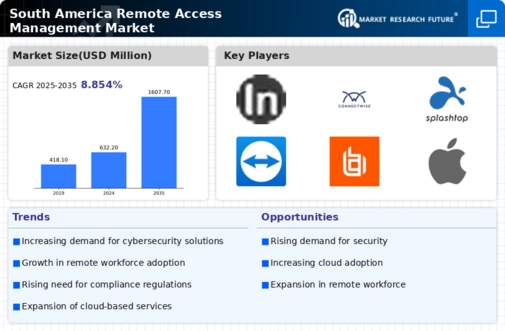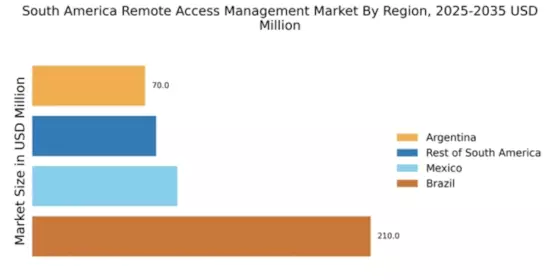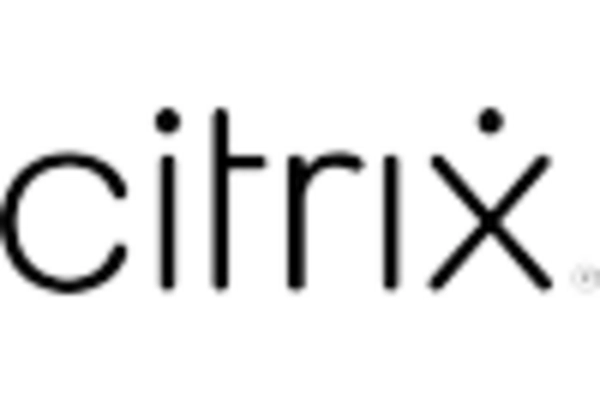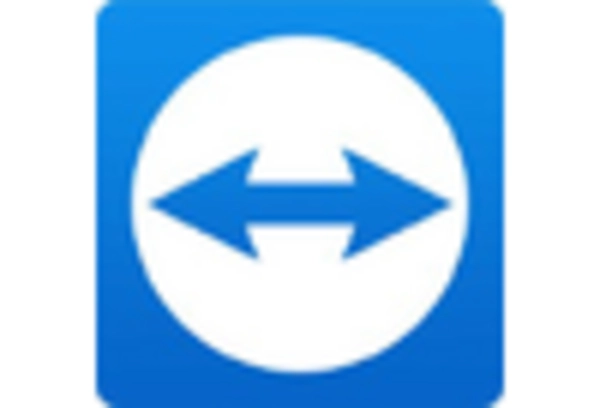The remote access-management market in South America is characterized by a dynamic competitive landscape, driven by increasing demand for secure and efficient remote connectivity solutions. Key players such as TeamViewer (DE), LogMeIn (US), and AnyDesk (DE) are actively shaping the market through strategic initiatives focused on innovation and regional expansion. TeamViewer (DE) emphasizes its commitment to enhancing user experience through continuous product development, while LogMeIn (US) has been pursuing strategic partnerships to broaden its service offerings. AnyDesk (DE) appears to be focusing on optimizing its platform for various industries, thereby enhancing its competitive positioning. Collectively, these strategies contribute to a moderately fragmented market structure, where competition is intensifying as companies seek to differentiate themselves through technological advancements and customer-centric solutions.
In terms of business tactics, companies are increasingly localizing their operations to better serve the South American market. This includes optimizing supply chains and establishing regional offices to enhance customer support. The competitive structure remains moderately fragmented, with several players vying for market share. The influence of key players is significant, as they leverage their technological capabilities and market knowledge to capture a larger audience. This competitive environment fosters innovation, as companies strive to meet the evolving needs of their customers.
In October 2025, TeamViewer (DE) announced the launch of its new AI-driven remote support tool, which aims to streamline troubleshooting processes for businesses. This strategic move is likely to enhance TeamViewer's value proposition by providing users with faster and more efficient support, thereby solidifying its position as a leader in the market. The integration of AI technology not only improves operational efficiency but also aligns with the growing trend of digital transformation across industries.
In September 2025, LogMeIn (US) expanded its partnership with a leading telecommunications provider in Brazil, enabling enhanced connectivity solutions for remote workers. This collaboration is strategically important as it allows LogMeIn to tap into a broader customer base while addressing the increasing demand for reliable remote access solutions. By leveraging the telecommunications provider's infrastructure, LogMeIn can offer improved service delivery and customer satisfaction, which are critical in a competitive landscape.
In August 2025, AnyDesk (DE) secured a significant investment to further develop its platform capabilities, particularly in the areas of security and user experience. This investment is indicative of AnyDesk's commitment to maintaining a competitive edge in the market. By enhancing its platform's security features, AnyDesk is likely to attract more enterprise clients who prioritize data protection and compliance, thus positioning itself favorably against competitors.
As of November 2025, the competitive trends in the remote access-management market are increasingly defined by digitalization, AI integration, and a focus on sustainability. Strategic alliances are becoming more prevalent, as companies recognize the need to collaborate to enhance their service offerings and market reach. Looking ahead, competitive differentiation is expected to evolve, shifting from price-based competition to a focus on innovation, technology, and supply chain reliability. This transition underscores the importance of developing unique value propositions that resonate with customers in an increasingly complex market.


















Leave a Comment